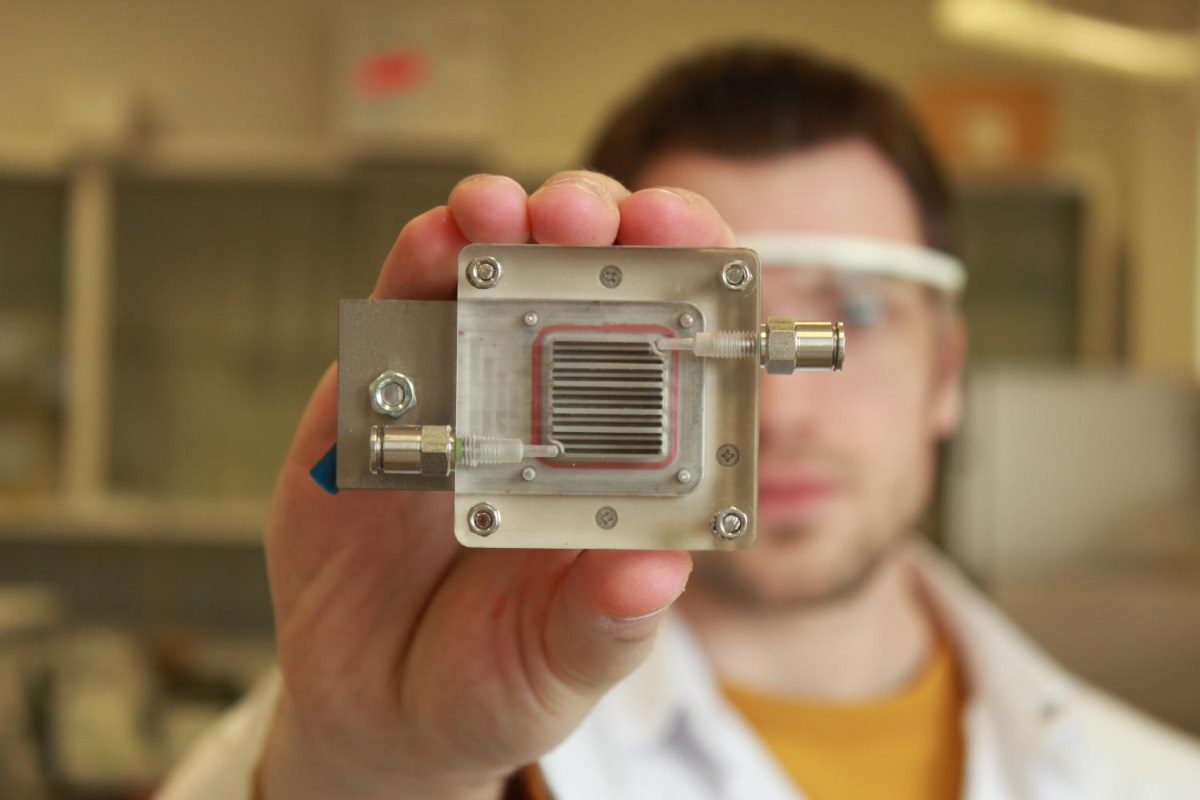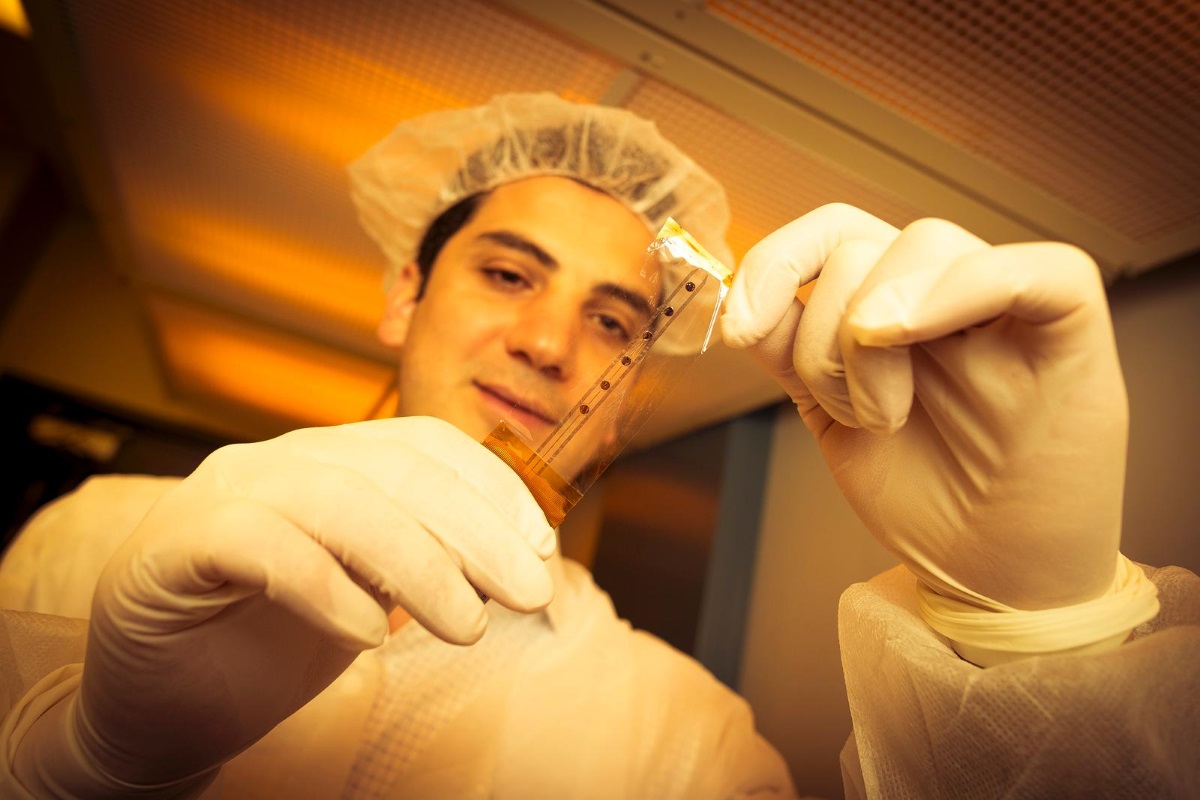Innovation Lab: Minesweeper Turtlebots, Double Clean Energy and Frozen Booze
- Friday, May 26th, 2017
- Share this article:
At Mobile Marketing, we’re proud to help tech companies showcase their cutting-edge solutions, whether it’s on our website, in our magazine or at our Mobile Marketing Summits. Giving a platform to companies that are breaking new ground in their market brings audiences one step closer to the ideas and developments that will shape tomorrow.
In that spirit, our Innovation Lab feature takes a step beyond the world of apps, ads and handsets with slightly bigger screens, in order to share some of the tech world’s innovative ideas. They might be interesting, disruptive or just outright strange, but these are the stories that have caught our eye over the past week.
Flat-pack Turtle Flops Safely Over Landmines
Engineers at Arizona State University (ASU) have designed a turtle-inspired robot that can be constructed from two sheets of laser-cut cardboard. The robot, which can be deployed in swarms, uses a flapping, crawling movement to safely navigate minefields and detect dangerous munitions for removal by the US army.
While the military already has robots designed for minesweeping, they are costly, bulky and difficult to deploy. The robotic turtles cost around $80 (£62) and can be constructed using cardboard, inexpensive motors and a computer core in around three hours. While the robot only moves at around three metres per minute, the designers think that a swarm of up to 100 turtle bots could clear large areas given time, identifying and tagging mines for removal.
In addition to the inexpensive nature of the robots, their programming enables them to adapt their movements to different types of desert and sand grain, maximising their efficiency and ensuring the robots do not become immobilised in unfamiliar terrain. The algorithm also enables them to adapt to rain and changing humidity, both of which can affect the desert surface.
“In contrast to the majority of reinforcement learning algorithms that potentially require many trials, our method needs only a small number of trial-and-error interactions with the environment to learn how to locomote,” said Heni Ben Amor, assistant professor at ASU’s Interactive Robotics Lab. “Indeed, in most of our experiments the robot learned a new gait within one to two hours.”
Pulling Power from Polluted Particles
 Creating clean energy from dirty air sounds like the sort of utopian technology that belongs in Star Trek, but researchers from the University of Antwerp and KU Leuven in Belgium believe they may have cracked it, creating a cell that purifies air, generates power and requires only light in order to function.
Creating clean energy from dirty air sounds like the sort of utopian technology that belongs in Star Trek, but researchers from the University of Antwerp and KU Leuven in Belgium believe they may have cracked it, creating a cell that purifies air, generates power and requires only light in order to function.
The process relies on specific nanomaterials that create a membrane between two chambers in the device. Air is purified on one side, while on the other side, hydrogen gas is produced as a byproduct of the process, which can then be stored and used as fuel. The method uses technology similar to those found in solar panels, so the scientists are hoping to use sunlight to power the process.
“These catalysts are capable of producing hydrogen gas and breaking down air pollution,” said Sammy Verbruggen, the professor leading the research. “In the past, these cells were mostly used to extract hydrogen from water. We have now discovered that this is also possible, and even more efficient, with polluted air.”
The researchers are currently only working with cells on the scale of a few square centimetres, but are hoping to scale up their devices and make them more efficient, enabling them to be used at an industrial level to both reduce air pollution and generate power, killing two environmental birds with one stone.
Create Your Own Pinball Machine with Makerball
In the age of virtual reality and smartphone games, the old-school charms of the pinball table might easily be overlooked, which is why a Swedish company has given the concept a retooling and created Makerball, which it describes as an “affordable, stable, mutable, pure and simple pinball machine”.
The starter kit includes the base, mechanical flippers and a number of basic obstacles, along with wires and conductive copper foil to make sensors. With the addition of a microcontroller and the company’s free Make & Play app, you can connect the sensors to your smartphone and track your score, bonus and more.
From there, your imagination is the limit, with the video demonstration showing tables decorated in a variety of ways, including with real plants forming obstacles. The kit is currently seeking crowdfunding on Kickstarter, with the basic kit starting at $245, and an additional range of obstacles, playfields, sensors and more planned if the project is successfully funded.
Smart Plastic Wrap Could Improve Brain Surgery Safety
 Brain surgery is so complex that it’s become a synonym for difficulty, but researchers from the University of California at San Diego are hoping to make the task a little simpler and safer with an update to the electrode grid brain mapping tools that are used by surgeons. Current electrode grids are bulky and relatively imprecise, and haven’t seen any major advances over the last 20 years.
Brain surgery is so complex that it’s become a synonym for difficulty, but researchers from the University of California at San Diego are hoping to make the task a little simpler and safer with an update to the electrode grid brain mapping tools that are used by surgeons. Current electrode grids are bulky and relatively imprecise, and haven’t seen any major advances over the last 20 years.
The new sensors developed use conductive polymers rather than metal electrodes, producing a much smaller, thinner grid that can cram 25 times more electrodes into the same space while still reducing the tools thickness from a few tenths of an inch down to just 0.0002 inches. The resulting grid fits much more closely to the brain for better readings and higher resolution, and could help spot activity like epileptic seizures.
“These electrodes occupy minuscule volumes – imagine Saran wrap, but thinner,” said Vikash Gilja, electrical engineering professor and co-lead of the study. “And we demonstrate that they can capture neural activity from the human brain at least as well as conventional electrodes that are orders of magnitude larger.”
Get a Supercooled Cocktail with Beyond Zero’s Frozen Liquor Ice Maker
If you’re a connoisseur of alcohol, you’ve probably debated whether or not you should add ice to your drink and water down the flavour, or risk a room-temperature beverage. That compromise could soon be a thing of the past with Beyond Zero’s new ice maker, which is capable of freezing liquor into ice cubes in less than five minutes.
The device is capable of freezing liquor and wine down to around -60 °C to create ice cubes in specific measures so that you always know how much you’re drinking, and ensure that the taste of your drink stays consistent. In fact, because it gets so cold, high-proof spirits like whiskey, tequila or vodka have their flavours “smoothed out”, letting you appreciate them more.
The system combines an ice maker and storage unit where ice cubes are kept until they are needed, and only uses about the same power as a 100w lightbulb. The company behind the invention are aiming at commercial venues like bars, hotels, restaurants and casinos, but the device is also approved for home use, if you can’t stand the thought of another warm or watery cocktail.
















